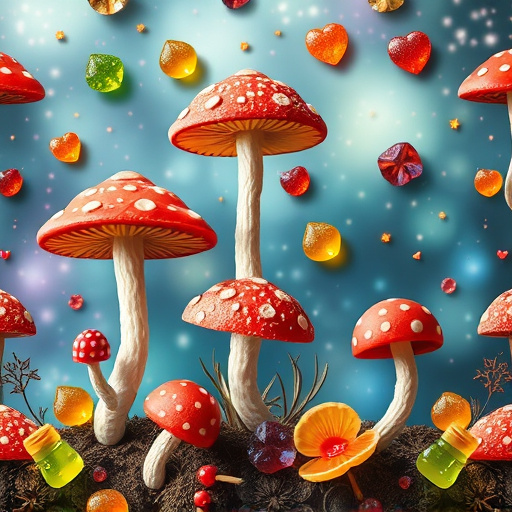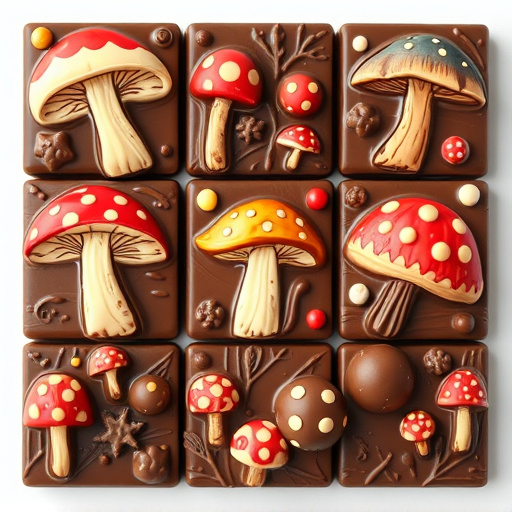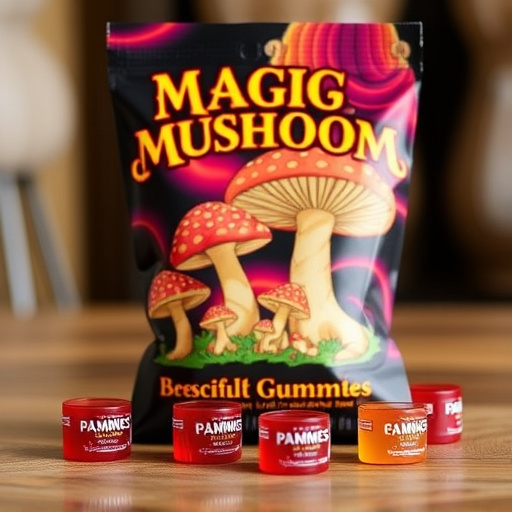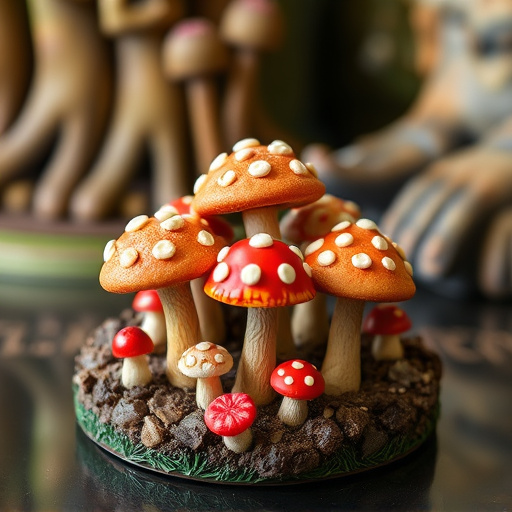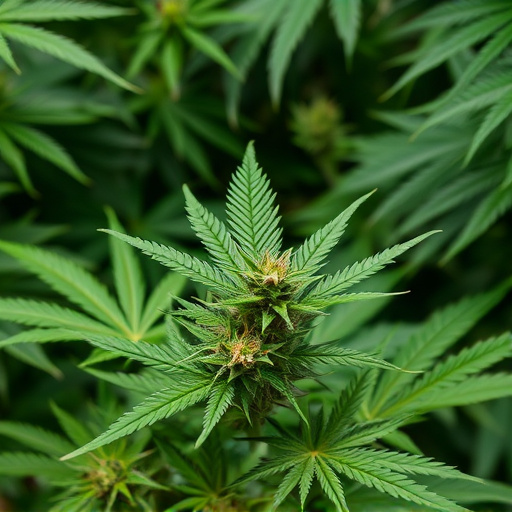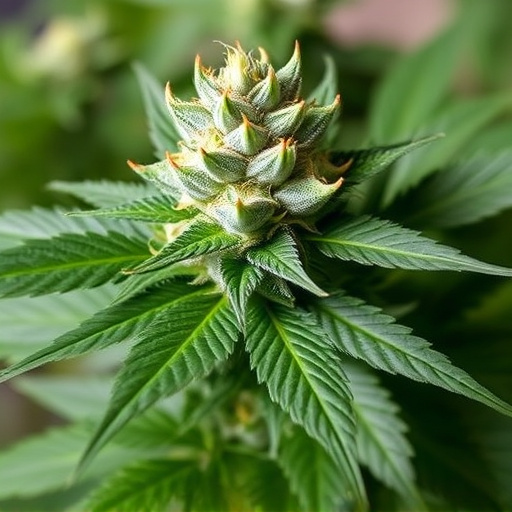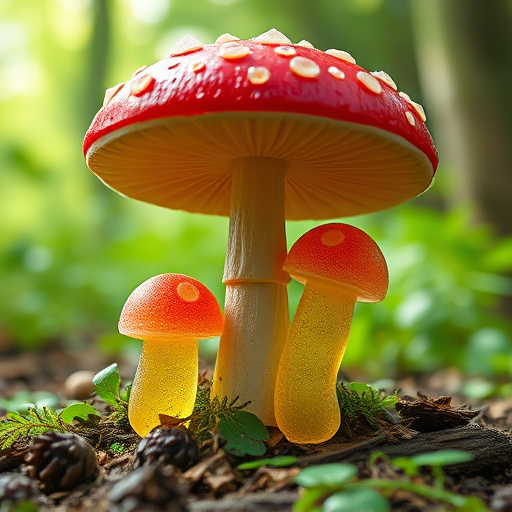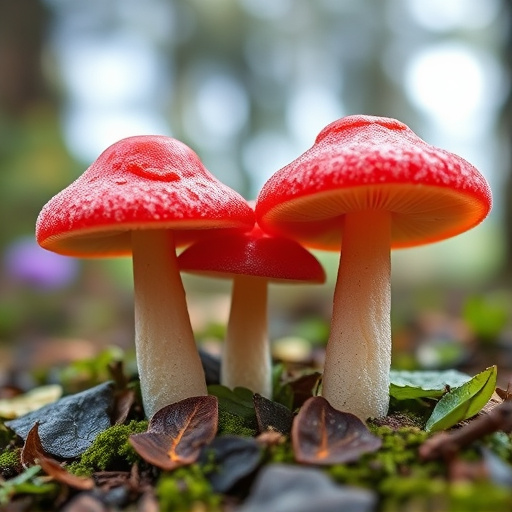"The Science Behind Magic Mushroom Gummies" reveals how manufacturers extract and concentrate psilocybin and psilocin from magic mushrooms to create consistent, safe, and therapeutic wellness products. These compounds interact with brain serotonin receptors, inducing altered perceptions and boosting creativity. Beyond recreational use, magic mushrooms show promise in treating depression, anxiety, and PTSD. Emerging trends include gummies as innovative delivery methods, combining therapeutic benefits with delightful sensory experiences.
“Unleash the therapeutic potential of nature with our in-depth look at The Science Behind Magic Mushroom Gummies. From the mystical psilocybin mushrooms to their modern incarnation as gummies, this article explores the active compounds, benefits, and complex world of wholesale distribution.
We delve into the science, uncovering how psilocybin and psilocin interact with the brain, leading to potential mental health advancements in treating anxiety, depression, and PTSD. Furthermore, discover their role in pain management, addiction recovery, and fostering creative inspiration.
Join us as we navigate the market, legalities, and strategies for sourcing and building partnerships in this burgeoning industry.”
- Understanding Magic Mushrooms and Their Active Compounds
- – An overview of psilocybin mushrooms and their psychoactive properties
- – The role of psilocybin and psilocin: how they interact with the brain
Understanding Magic Mushrooms and Their Active Compounds
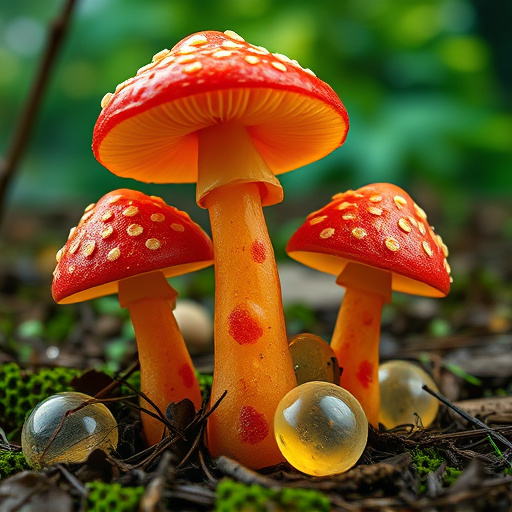
Magic mushrooms, scientifically known as psilocybin mushrooms, have been a subject of fascination and intrigue for decades. These fungi contain unique compounds, primarily psilocybin and psilocin, which are responsible for their psychoactive effects. When consumed, these compounds interact with our brain’s serotonin receptors, leading to altered perceptions and heightened sensory experiences. The science behind magic mushroom gummies involves understanding how these active compounds can be extracted, concentrated, and infused into edible forms like gummies.
The process of creating magic mushroom gummies involves careful preparation and precise dosing. By extracting the psilocybin and psilocin from the mushrooms using various methods, manufacturers can create a consistent and controlled dose in each gummy. This allows users to experience the therapeutic benefits and psychedelic effects with greater predictability. The Science Behind Magic Mushroom Gummies plays a pivotal role in ensuring safety, efficacy, and accessibility for those seeking alternative wellness solutions.
– An overview of psilocybin mushrooms and their psychoactive properties
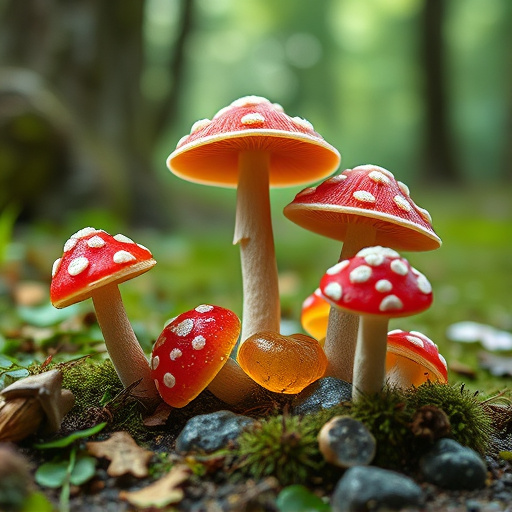
Psilocybin mushrooms, often referred to as “magic mushrooms,” are a natural source of psychoactive compounds that have fascinated both scientists and enthusiasts for decades. The science behind these fungi reveals an intricate relationship between their chemical composition and the mind-altering experiences they induce. Psilocybin, the primary active compound, is a serotonergic mushroom that mimics the effects of serotonin in the human brain. When consumed, psilocybin converts into psilocin, which interacts with serotonin receptors, leading to altered perceptions, heightened creativity, and spiritual insights.
The ‘magic’ lies not only in their ability to induce trips but also in the potential therapeutic benefits they offer. Research has explored psilocybin’s role in treating various mental health conditions such as depression, anxiety, and PTSD. The unique properties of these mushrooms have sparked interest in developing innovative delivery methods, including gummies, making them accessible for both recreational and medicinal purposes. Understanding the science behind magic mushroom gummies provides a glimpse into a potential future where these natural compounds can be utilized therapeutically while offering a delightful sensory experience.
– The role of psilocybin and psilocin: how they interact with the brain
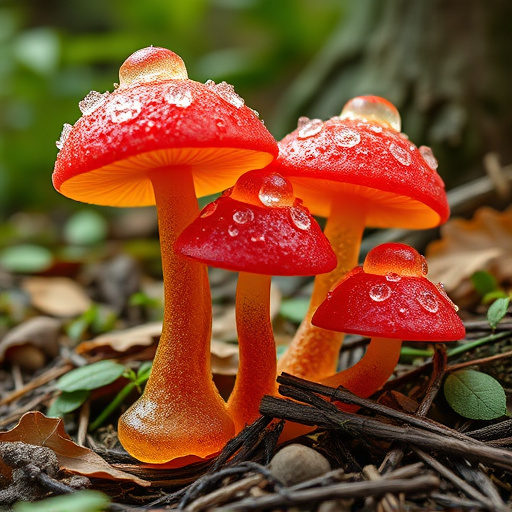
Psilocybin and psilocin, the active compounds found in magic mushrooms, have been the subject of extensive scientific research due to their profound effects on the human brain. These compounds are classified as serotonergic psychedelics, meaning they interact with serotonin receptors in the brain, specifically targeting areas involved in perception, mood, and cognition. When consumed, psilocybin is metabolized into psilocin, which binds to serotonin receptors, leading to altered states of consciousness and heightened sensory experiences.
The Science Behind Magic Mushroom Gummies involves understanding how these compounds influence neural pathways. Studies have shown that psilocin can increase activity in areas like the prefrontal cortex and amygdala, regions associated with emotional processing and decision-making. This interaction results in the characteristic changes in perception, thought patterns, and mood alterations often described by users. Research suggests that this reactivation of brain circuits may hold therapeutic potential for treating various mental health conditions, adding a layer of intrigue to the ongoing conversation surrounding the medical application of magic mushrooms and their derivatives like gummies.
The science behind magic mushroom gummies is a fascinating exploration of psilocybin’s potential therapeutic benefits. By understanding the active compounds in these mushrooms and their interaction with the brain, we can appreciate the growing interest in their use for mental health treatments. However, it’s crucial to approach this topic with caution, as research is still evolving, and regulations vary globally. Wholesale deals on magic mushroom gummies should be considered within a responsible and regulated framework, ensuring safety and ethical practices.


